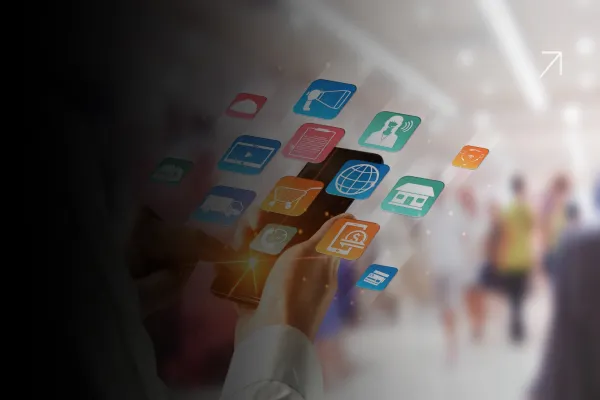Healthcare is changing faster than ever. The old world of paper records, long clinic queues, and face-to-face-only interactions is giving way to a new reality where technology plays an equal role alongside doctors, pharmacists, and care providers. At the heart of this shift is phygital, which is, the fusion of physical and digital experiences.
For pharma, healthcare, and life sciences companies, the concept of phygital isn’t just jargon. It’s a fundamental redesign of how patients interact, how therapies are delivered, and how businesses scale. Digital solutions alone cannot solve patient trust gaps. Physical infrastructure alone cannot meet the demands of an aging population and chronic disease burden. But together, digital plus physical, the result is a model that feels personal, seamless, and effective.
The opportunity is massive. Patients expect care that’s as easy to access as e-commerce but as trustworthy as their family doctor. Regulators push for transparency and data integrity. Companies face competitive pressure to innovate or risk being irrelevant. Against this backdrop, phygital is emerging as a strategic differentiator.
This blog explores what phygital means for the pharma and healthcare sectors, how it shapes patient journeys, its business value, challenges, global case studies, and a practical roadmap for leaders.
What Phygital Really Means for Pharma and Healthcare
Defining Phygital Beyond Buzzwords
Phygital is often described as a mix of physical and digital, but the real meaning goes deeper. In pharma and healthcare, it’s about building an integrated patient experience. It could mean a clinical trial where participants use a mobile app to log side effects while still visiting a hospital for key check-ups. Or a patient education program where AR/VR tools explain drug mechanisms before a physical consultation with a physician.
The essence of phygital is continuity. Patients move between online and offline touchpoints without feeling like they’ve entered a different universe.
Why It Matters to Life Sciences Today
Life sciences companies are under pressure to shorten drug discovery cycles, increase transparency, and engage with patients directly. Traditional methods are expensive and slow. Phygital solutions offer new ways to collect real-world evidence, monitor adherence, and educate patients. For example, combining remote monitoring tools with physical lab tests gives richer datasets than either channel alone.
The Shift from Digital-Only to Digital-Physical Care
The pandemic accelerated telemedicine, remote diagnostics, and digital platforms. But as restrictions eased, patients wanted the reassurance of physical care too. The future isn’t digital-only; it’s digital-enhanced physical care. Companies that adopt this blended approach will lead the market.
The Phygital Patient Journey
How Patients Interact Across Touchpoints
Patients rarely stick to one channel. They might search online for symptoms, use a chatbot for initial advice, schedule a physical appointment, and later receive follow-up reminders on WhatsApp. Phygital ensures these steps connect, creating a single journey rather than disjointed interactions.
Examples of Phygital Healthcare Models
Consider diabetes management. Patients use wearables to track blood sugar, share data with doctors through mobile platforms, and still meet in person for quarterly reviews. Another example: oncology care, where virtual tumor boards review cases digitally, followed by coordinated physical treatments at specialized centers.
Building Trust Through Digital-Physical Consistency
Trust is the biggest asset in healthcare. Patients feel confident when digital recommendations align with what doctors say in person. Consistency across both worlds builds credibility and loyalty.
Phygital in Pharma: From R&D to Patient Access
Transforming Clinical Trials with Phygital Tools
Recruitment and retention are major challenges in clinical trials. Phygital tools help by combining online enrollment, e-consent, and remote monitoring with physical site visits. This hybrid model improves participation rates and data quality.
Enhancing Drug Launches and Marketing Strategies
Pharma launches often involve medical reps, events, and campaigns. By adding digital channels like webinars, interactive apps, and AR-based demos, companies make launches more impactful and measurable.
Making Medicines More Accessible
Phygital distribution networks integrate e-pharmacies with local chemists. Patients can order drugs online and pick them up nearby, ensuring both convenience and compliance.
Driving Healthcare Innovation Through Phygital
AI, IoT, and Wearables in Care Delivery
Wearables track vital signs in real time, while AI algorithms flag anomalies. The combination enables early intervention. For pharma, this provides valuable adherence and outcomes data.
How Telemedicine Blends with Physical Care
Telemedicine cannot replace hospitals, but it can triage, manage chronic conditions, and reduce unnecessary visits. When paired with scheduled physical check-ups, it offers efficiency without compromising quality.
Data-Driven Insights for Life Sciences Companies
Phygital creates massive datasets: digital logs, biometric readings, in-person reports. Life sciences companies can mine this for insights into efficacy, safety, and patient behavior; fueling innovation and evidence-based strategies.
Business Value of Phygital Transformation
Improving ROI for Pharma and Healthcare Providers
Digital initiatives often struggle to prove ROI. Phygital solves this by linking outcomes directly to patient satisfaction and operational efficiency. Shorter hospital stays, reduced readmissions, and higher trial participation are tangible results.
Streamlining Operations and Reducing Costs
Hybrid care models lower costs by reducing unnecessary tests, improving drug adherence, and optimizing resource use. Pharma companies can reduce field-force dependency by complementing them with digital platforms.
Building Competitive Advantage in Life Sciences
The companies that embrace phygital early set themselves apart. They’re seen as patient-centric, innovative, and trustworthy: qualities that directly translate to market leadership.
Challenges in Phygital Adoption
Balancing Human Touch with Automation
Automation improves efficiency, but patients still crave empathy. The challenge is using technology to amplify human touch, not replace it. Chatbots may answer FAQs, but complex discussions still require doctors.
Data Privacy and Regulatory Concerns
Healthcare data is sensitive. Companies must comply with global regulations like GDPR and HIPAA, and local standards too. Secure infrastructure is non-negotiable.
Overcoming Resistance to Change
Doctors, patients, and employees may resist new tools. Training, incentives, and gradual integration help smooth adoption.
Phygital and Patient Experience
Personalization in Care Journeys
Phygital enables personalized nudges, reminders, and recommendations. For example, a cancer patient might receive customized diet tips on an app that aligns with their in-person treatment plan.
Building Long-Term Patient Relationships
Patients stick with brands that stay connected. By combining physical follow-ups with digital engagement, companies build loyalty that lasts beyond a single transaction.
Accessibility for Rural and Urban Populations
Digital bridges distance. Phygital models ensure even patients in rural areas get access to specialists while retaining local physical touchpoints.
Global Case Studies of Phygital Healthcare
Pharma Companies Leading the Way
Pfizer’s digital trial enrollment platforms, Novartis’ AR patient education tools, and Roche’s connected monitoring apps show how global pharma embraces phygital.
Hospitals and Digital-Physical Integration
Leading hospitals integrate telehealth with in-person care, ensuring patients move smoothly between platforms. Mayo Clinic, for instance, built hybrid programs combining AI triage with physician consults.
Life Sciences Innovation Across Markets
From Asia to Europe, life sciences firms are adopting wearable-driven research and digital therapeutics supported by physical networks. These examples show scalability.
The Future of Phygital in Pharma and Healthcare
Next-Gen Tech Shaping Care Delivery
Expect more AR/VR in surgeries, blockchain for supply chains, and AI-driven digital twins for drug testing: all blending digital and physical.
Predictions for the Next Decade
Phygital will become the default model. Purely physical or purely digital care will look outdated. Patients will expect hybrid by default.
Opportunities for Pharma and Life Sciences Leaders
Leaders must seize opportunities in personalized medicine, remote trials, and phygital patient support programs to stay competitive.
Building a Phygital Roadmap for Your Organization
Assessing Current Capabilities
Companies must start with a maturity assessment: digital tools in use, patient feedback, and infrastructure readiness.
Phased Adoption of Phygital Models
Pilots work best. Start with one therapy area or hospital department, prove ROI, and then scale.
Partnering for Long-Term Growth
Phygital success requires partnerships with tech providers, startups, research organizations, and regulators. No one can do it alone.
Conclusion
Phygital is no longer optional for pharma, healthcare, and life sciences companies. It’s the model patients demand, regulators support, and competitors are already adopting. By merging digital efficiency with physical trust, organizations can deliver better outcomes, stronger engagement, and long-term growth.
The question isn’t whether phygital will reshape healthcare. It’s whether your organization will lead that change or lag behind.
Ready to explore how phygital strategies can transform your healthcare or life sciences business? Let’s connect and design a roadmap for impact.





